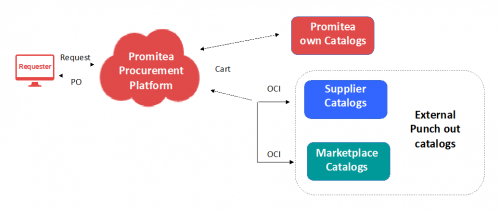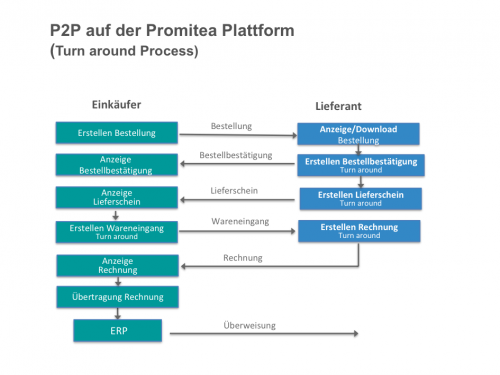Part 3 - Procurement
Series of articles on digitization of purchase:
- Digitization of procurement processes strengthens the company's competitiveness (introductory part)
- Part 1 - SRM for Strategic Purchasing
- Part 2 - Sourcing for operative purchasing
- Part 3 - Procurement for Catalog Purchasing
Procurement (Procure to Pay / P2P) refers to a purchasing process based on catalog data. Traditionally, requesters from different departments prepare a request which is transferred to purchasing department, where an order is generated and processed. We will show you how digitisation drastically simplifies this process.
This procedure means that
- The procurement department is burdened with processes it shouldn't be bothered by.
- The process cost is considerably higher than the achievable savings.
- The process takes too long, which leads to dissatisfaction of the requesters.
This is where catalog-based purchasing comes in and shifts the ordering process to requester´s departments to the greatest extent possible. The requesters are mostly familiar with the catalog-based eShops from their private life. A similar process can be transferred to the requestors if they follow some additional rules customary to the business world. The process is represented schematically as follows:
The starting point is the integration of catalogs, from that the users select the articles they need in an eShop-like manner and prepare them for ordering using shopping baskets.
The choice of suitable catalogs remains the responsibility of the procurement department: For each product category, one or more "approved catalogs" are selected from which the users may order. These are catalogs with negotiated conditions and prices or discounts. The permitted catalogs are determined by supplier competition, for example, with the help of Sourcing.
Contracts are concluded with the catalog suppliers. They describe the organization of catalog maintenance, formats of catalog data, and how they are uploaded to Promitea. Each requester receives access rights to permitted catalogs from which they order. An additional alternative: Create your catalogs for selected product categories according to your requirements. They consist of articles that maintain the existing ERP system or are supplemented by Purchasing from other sources.
It is also possible to access external catalogs directly by using standard interfaces and procedures such as OCI and Punch-Out. For the rare cases of C-items - called "long tail" - Promitea provides access to marketplaces such as Mercator and Amazon Business.
After the requester has selected the required articles, the shopping basket is subjected to the approval workflow. The workflow is multi-level and follows the following rules, for example:
- Purchase value up to 50 €: is automatically approved by the system
- Purchase value up to 200 €: is approved by 1st approving level (which is e.g. a superior)
- Purchase value > 200 €: is approved by a higher level supervisor
For each requester or his department, a budget for a particular planning period is defined. For each approval, the system displays the degree to which the budget has been used up. To control these workflows, Promitea offers a complex system of settings determined by Purchasing.
This system arrangement finally allows the following process:
- The requesters place their orders just like they would do from an eShop
- The shopping cart is approved using an electronic workflow and checked for budget availability.
- The entire process does not burden the purchasing department and is strongly shortened.
After approval, the data in the shopping cart is automatically converted to purchase order(s). The orders trigger the fulfillment process (Order to Pay, O2P). These processes can be executed in ERP if it has been agreed on between the purchasing company and the vendor. If this is not the case, Promitea offers an electronic O2P process based on WebEDI. Its functionality is shown schematically here:
WebEDI-based O2P is particularly suitable for smaller suppliers who have not yet established an EDI process with purchasing companies.
Which results can be achieved with catalog purchasing?
The company-wide use of negotiated user-bound catalogs leads to price savings in the range of 10%. They are achieved by the fact that all company catalog prices are negotiated. Increased purchasing volumes per item allows for better conditions. Additional cost reductions are achieved, for example, in logistics and lower maintenance costs if they are incurred for items such as PCs, printers, etc. (TCO).
In percentage terms, much higher savings are achieved in process costs. They are in the order of 50-80%. Another benefit is that the purchasing department is able to shift their attention to more important tasks.
Summary:
By using Promitea in these three core areas of procurement, significant savings can be achieved quickly, effectively, and without risk.
Once the basis for the digital transformation of procurement has been laid, there is room for further optimization. The data obtained using the above-mentioned methods helps to refine procurement instruments to exploit even the latest improvement potentials and further strengthen the role of procurement in the company.





